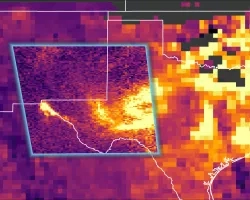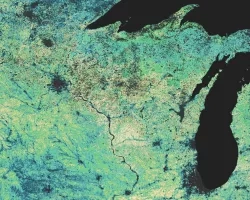Phoenix Climate (Spring 2022)
Team: Alison Bautista (Project Lead), Haley Stuckmeyer, Gloria Liu, Ben Schafermeyer
Summary: Phoenix, Arizona is the hottest city in the United States, with daytime summer temperatures consistently reaching upwards of 100°F. As these daytime temperatures continue to climb, heat-related illnesses and morbidity also increase. The City of Phoenix hopes to secure funding to implement the American Rescue Plan Act (ARPA) residential tree equity accelerator program. This funding will be used for targeted investments in underserved neighborhoods to increase tree canopy cover, engaging 5,000 households across selected neighborhoods. By partnering with the City of Phoenix, the Arizona Office of Heat Mitigation, and Arizona State University’s Urban Climate Research Center, our team identified residential neighborhoods, block groups within qualified census tracts, and parcels to be prioritized in the ARPA program. We conducted an analysis using NASA Earth observations, movement and heat exposure data, sociodemographic data, and tree canopy data. For Earth observations, we acquired daytime land surface temperature from the Landsat 8 Operational Land Imager (OLI) and Thermal Infrared Sensor (TIRS) and land cover classification from the United States Geological Survey (USGS) National Land Cover Database (NLCD). The project will support the prioritization of city resources and tree plantings based on community vulnerability, as well as help initiate public engagement efforts and literacy with an interactive dashboard and GIS layers that contribute to the city’s property information portal.
Project Deliverables:



